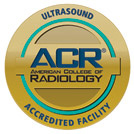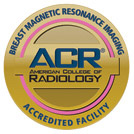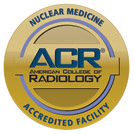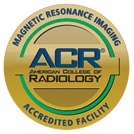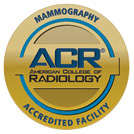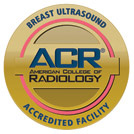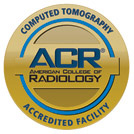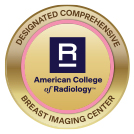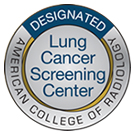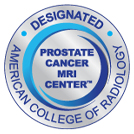A breast biopsy involves the removal of tissue with a needle, guided by imaging technology. Doctors generally recommend this procedure if a mammogram identifies abnormalities, including uneven tissue or potentially malignant growths. A breast biopsy can help determine if cancerous cells are present and which removal treatments are needed.
What Is a Breast Biopsy?
Breast biopsies encompass a range of procedures to extract a tissue sample, based on size, location and density characteristics. Procedures are either needle or surgical-based.
Needle Biopsies
Your doctor may recommend one of the following:
- Fine-Needle Aspiration Biopsy: If a lump is found during a mammogram, your doctor recommends this procedure involving a needle attached to a syringe. The needle is guided to the lump to determine if it’s a solid mass or a fluid-filled cyst. If its solid, you may be directed to another type of breast biopsy to obtain a sufficient tissue sample.
- Core Needle Biopsy: Also following the discovery of a lump during a mammogram, this biopsy involves guiding a hollow needle toward the mass, often using ultrasound or MRI to obtain a tissue sample for analysis.
- Stereotactic Biopsy: Using prior breast imaging for comparison, this breast biopsy requires a patient to lie face-down to identify areas of concern with mammography. As an alternative to surgical biopsy, a small incision is made to extract tissue samples with a needle or vacuum-type probe. A small metal marker may be added to each biopsy site to identify the location of any cancerous tissue.
Surgical Biopsies
Your doctor may recommend a surgical biopsy to remove a larger section of breast tissue for analysis. Surgical procedures are performed in an operating room and may involve sedation. Wire or seed localization might also be used to identify the position of the mass.
Wire localization involves passing a wire through the breast to the growth and seed localization injects a small radioactive bead into the area being extracted. During this procedure, the surgeon will remove the wire or seed along with the tissue mass.
Afterwards, a pathologist will examine the sample to determine if cancer cells are present along the edges or margins. Should cancerous cells be found toward the margins, a second surgical biopsy will be needed to remove additional tissue.
Surgical biopsies include:
- Excisional Breast Biopsy: Also called a lumpectomy, this procedure involves removing a potentially cancerous growth and surrounding tissue for analysis.
- Incisional Breast Biopsy: Only a portion of the potentially cancerous lump or abnormal tissue is removed for analysis.
How a Breast Biopsy Is Selected
Your doctor determines the ideal biopsy procedure based on:
- The size of the lump or abnormal tissue
- The location of the affected area
- How many areas need to be biopsied
- Existing health concerns
While needle-based biopsies are less invasive, both procedures come with risks of bruising, bleeding, swelling or infection near the biopsy site. Tissue removal for surgical biopsies requires more recovery time and may change the appearance of the breast.
When Is a Breast Biopsy Recommended?
Doctors may recommend a breast biopsy if a mammogram or similar imaging procedure identifies a lump or another abnormal area. Breast biopsies help rule out breast cancer or supply a tissue sample sufficient for diagnosis. In this latter case, your doctor may suggest additional biopsy procedures to confirm the presence of cancerous cells to be removed.
Outside of breast cancer, a biopsy determines if the growths or abnormalities are cysts or calcium deposits.
What to Expect
Prior to the biopsy, inform your doctor if you have taken aspirin in the past week, have an allergy, use a blood thinner, take any prescription or over-the-counter medications or supplements, or cannot rest on your stomach for more than a few minutes.
Also let your doctor know if you have a pacemaker or other implanted device or if you may be pregnant. These conditions influence which type of imaging may be used to guide the biopsy needle.
Ahead of the procedure, you will be asked not to use lotions, powders, deodorants, creams, or perfumes on your arm, underarm and breast area. While a needle biopsy tends to involve a numbing agent, the sedative used for a surgical biopsy requires someone drive you home following the procedure. Additionally, you may be asked to fast ahead of time.
For the procedure itself:
- Needle biopsies are typically performed on an outpatient basis. As surgical biopsies often involve general anesthesia, patients should arrange for a ride home.
- For needle biopsies, you may be asked to wear a gown.
- Patients typically lie down or sit up, based on the excision and imaging method used.
- Before removing a sample, the radiologist or technologist sterilizes the area to be biopsied. A non-surgical biopsy does not require anesthesia.
- For a surgical biopsy, anesthetic may be delivered through an IV and the patient’s heart rate and blood pressure will be monitored.
- A probe or computer assists with finding the location of the area to be biopsied. For surgical biopsies, the wire or radioactive seed will be inserted.
- Excluding fine-needle aspiration, a small incision is made in the skin. As the needle passes through to take a sample, you may notice some pressure.
- Once the sample is obtained, pressure is applied to the incision and stitches or adhesive strips and a sterile bandage are applied to dress the area.
- The tissue will be sent to a lab for a pathologist to examine and determine if it has benign or malignant cells.
To recover from a breast biopsy:
- Patients given general anesthesia will wait in a recovery room, where their blood pressure, pulse and breathing are monitored. Once the patient wakes up, they will continue their recovery in a hospital room or at home.
- Patients who underwent a needle biopsy can go home after the procedure, but should take it easy for the rest of the day.
- All patients are advised to keep the biopsy area clean and dry and will need a follow-up appointment to have any stitches removed.
- The area may be sore for multiple days; apply an ice pack to reduce swelling and take a pain reliever as prescribed by your doctor.
- Follow all procedures for bathing, removing the dressing and physical activity.
- Alert your doctor if you experience fever, chills, redness, swelling, bleeding or draining from the biopsy site, or pain around the incision area.
As you wait for the results, a pathologist analyzes your tissue and will discuss their findings with your doctor. The pathologist also puts together a report with information about tissue size, consistency and whether the cells are cancerous, noncancerous or precancerous. The radiologist may be asked for their opinion on a tissue, lesion or another abnormality.
At this stage, your doctor discusses these findings with you and any potential follow-up procedures, including more invasive biopsies and proposed treatment plans.
Has your doctor recommended a breast biopsy? Contact Midstate Radiology Associates to make an appointment.





